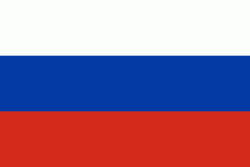Bronnitsy
 |
 |
Local economy relies on food processing and packaging, construction services and jewellery manufacturing. Bronnitsy is listed among the twenty-two historical towns of Moscow Oblast.
Existence of Bronnitsy is attested since 1453. The village emerged as a stopover station on the highway between Moscow and Ryazan (present-day M5 road), and its population and economy traditionally tended to horses. The House of Romanov stables, established in Bronnitsy by 1634, evolved into stud farms supplying riding horses to the cavalry. In the 1780s the administrative reform of Catherine the Great turned the village into a proper small town with a grid plan and a growing merchant community. In the second half of the 19th century Bronnitsy was gradually industrialized, becoming a town of small textile mills and jewelers.
Bronnitsy had a minor role in the military history of the Time of Troubles and Napoleon's invasion of Russia, when it became the farthest point of French advance after the fall of Moscow, but were spared from military action and destruction. Its key landmarks are the five-domed cathedral of Archangel Michael (completed in 1705), the church of Entry into Jerusalem (1845) and the neoclassical cavalry barracks.
Toponyms starting with Bron- (plural Bronnitsy, Broniki; singular Bronnikovo, Brontsa etc.) are common to all Eastern Slavic territories, from Bronytsia in Lviv Oblast of Ukraine to Bronnikovo in Chita Oblast of Russia. Each of these towns and villages has a different etymology behind its name. In case of Bronnitsy in Moscow Oblast, all proposed versions were contested and none gained a solid preference of the historians.
* The most popular version derives Bronnitsy from bron' (modern броня, armor), suggesting that Bronnitsy was a settlement of armorers. This version, however, contradicts history of medieval Bronnitsy.
* Distantly related explanations suggest the existence of a notable bronnik - an armored warrior, or a person named Bronislav.
* Another explanation connects Bronnitsy to bran' (брань, fight or battle), referring to the struggle against Tatars.
* The most plausible version derives Bronnitsy from obsolete bronka, a word originally meaning oat spikes, later spikes of any cultivated cereal. Bronnitsy emerged as a station on a yam highway, and its grain caches were essential for feeding yam horses. Bronnitsy, presumably, were the feeding troughs placed along the highway.
The latter version is supported by the fact that another, and older, village once named Bronnitsy, present-day Bronnitsa on Msta River, also evolved as a yam station.
Map - Bronnitsy
Map
Country - Russia
 |
 |
| Flag of Russia | |
The East Slavs emerged as a recognisable group in Europe between the 3rd and 8th centuries CE. The first East Slavic state, Kievan Rus', arose in the 9th century, and in 988, it adopted Orthodox Christianity from the Byzantine Empire. Rus' ultimately disintegrated, with the Grand Duchy of Moscow growing to become the Tsardom of Russia. By the early 18th century, Russia had vastly expanded through conquest, annexation, and the efforts of Russian explorers, developing into the Russian Empire, which remains the third-largest empire in history. However, with the Russian Revolution in 1917, Russia's monarchic rule was abolished and replaced by the Russian SFSR—the world's first constitutionally socialist state. Following the Russian Civil War, the Russian SFSR established the Soviet Union (with three other Soviet republics), within which it was the largest and principal constituent. At the expense of millions of lives, the Soviet Union underwent rapid industrialization in the 1930s, and later played a decisive role for the Allies of World War II by leading large-scale efforts on the Eastern Front. With the onset of the Cold War, it competed with the United States for global ideological influence; the Soviet era of the 20th century saw some of the most significant Russian technological achievements, including the first human-made satellite and the first human expedition into outer space.
Currency / Language
| ISO | Currency | Symbol | Significant figures |
|---|---|---|---|
| RUB | Russian ruble | ₽ | 2 |
| ISO | Language |
|---|---|
| CE | Chechen language |
| CV | Chuvash language |
| KV | Komi language |
| RU | Russian language |
| TT | Tatar language |















